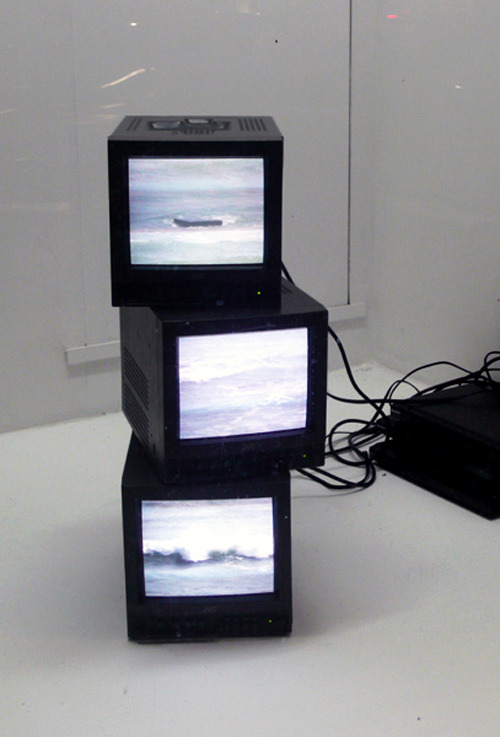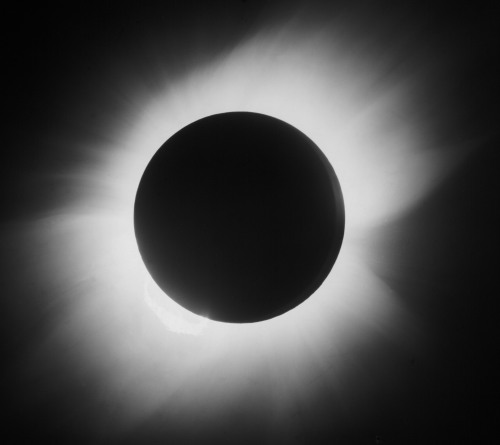“X-rays Reveal The Inner Beauty Of Shells.” National Geographic. March 1955.

“X-rays reveal the inner beauty of shells.” National Geographic. March 1955.
More Posts from Hannahhaifisch and Others


Exhibition

Watching the clouds go by on #Mars. Check out these atmospheric ripples!

#MA17-888
A new geometric design every day

Stretching SpaceTime
According to general relativity, the sun’s mass makes an imprint on the fabric of spacetime that keeps the planets in orbit. A neutron star leaves a greater mark. But a black hole is so dense that it creates a pit deep enough to prevent light from escaping.
Image credit: James Provost


Physicists discover hidden aspects of electrodynamics
Radio waves, microwaves and even light itself are all made of electric and magnetic fields. The classical theory of electromagnetism was completed in the 1860s by James Clerk Maxwell. At the time, Maxwell’s theory was revolutionary, and provided a unified framework to understand electricity, magnetism and optics.
Now, new research led by LSU Department of Physics and Astronomy Assistant Professor Ivan Agullo, with colleagues from the Universidad de Valencia, Spain, advances knowledge of this theory. Their recent discoveries have been published in Physical Review Letters.
Maxwell’s theory displays a remarkable feature: it remains unaltered under the interchange of the electric and magnetic fields, when charges and currents are not present. This symmetry is called the electric-magnetic duality.
However, while electric charges exist, magnetic charges have never been observed in nature. If magnetic charges do not exist, the symmetry also cannot exist. This mystery has motivated physicists to search for magnetic charges, or magnetic monopoles. However, no one has been successful. Agullo and his colleagues may have discovered why.
Read more ~ SpaceDaily


Fuzzy Okenite - Jalgaon, India


0008

Photograph of the May 1919 solar eclipse captured by Arthur Eddington, which proved Einstein’s theory of general relativity.
Credit: SSPL/Getty Images
-
 cut-off-all-my-fingers liked this · 1 month ago
cut-off-all-my-fingers liked this · 1 month ago -
 dbelskyi liked this · 1 month ago
dbelskyi liked this · 1 month ago -
 rafaelcristancho liked this · 2 months ago
rafaelcristancho liked this · 2 months ago -
 ceciinspo reblogged this · 2 months ago
ceciinspo reblogged this · 2 months ago -
 brownwhippedcream reblogged this · 5 months ago
brownwhippedcream reblogged this · 5 months ago -
 brownwhippedcream liked this · 5 months ago
brownwhippedcream liked this · 5 months ago -
 apantomancja reblogged this · 7 months ago
apantomancja reblogged this · 7 months ago -
 kuaixiaoquan reblogged this · 7 months ago
kuaixiaoquan reblogged this · 7 months ago -
 gaiawatcher liked this · 8 months ago
gaiawatcher liked this · 8 months ago -
 dbeatoff reblogged this · 8 months ago
dbeatoff reblogged this · 8 months ago -
 k141021501744 reblogged this · 8 months ago
k141021501744 reblogged this · 8 months ago -
 lukimyubihainpukpuk liked this · 9 months ago
lukimyubihainpukpuk liked this · 9 months ago -
 concupiscience reblogged this · 9 months ago
concupiscience reblogged this · 9 months ago -
 k141021501744 reblogged this · 10 months ago
k141021501744 reblogged this · 10 months ago -
 algds liked this · 10 months ago
algds liked this · 10 months ago -
 probablycate liked this · 10 months ago
probablycate liked this · 10 months ago -
 selfundiagnosed reblogged this · 10 months ago
selfundiagnosed reblogged this · 10 months ago -
 nuclearskyscrapers reblogged this · 10 months ago
nuclearskyscrapers reblogged this · 10 months ago -
 nuclearskyscrapers liked this · 10 months ago
nuclearskyscrapers liked this · 10 months ago -
 beleagueredjester reblogged this · 10 months ago
beleagueredjester reblogged this · 10 months ago -
 bongwater-baby liked this · 10 months ago
bongwater-baby liked this · 10 months ago -
 ahni-animalia reblogged this · 10 months ago
ahni-animalia reblogged this · 10 months ago -
 gobabalon reblogged this · 10 months ago
gobabalon reblogged this · 10 months ago -
 gobabalon liked this · 10 months ago
gobabalon liked this · 10 months ago -
 doomtoflesh reblogged this · 11 months ago
doomtoflesh reblogged this · 11 months ago -
 ekkuz liked this · 11 months ago
ekkuz liked this · 11 months ago -
 asongpanda1 liked this · 11 months ago
asongpanda1 liked this · 11 months ago -
 faeola reblogged this · 11 months ago
faeola reblogged this · 11 months ago -
 martha-anne liked this · 11 months ago
martha-anne liked this · 11 months ago -
 aleqth liked this · 1 year ago
aleqth liked this · 1 year ago -
 crazysensations97 liked this · 1 year ago
crazysensations97 liked this · 1 year ago -
 dazeylo reblogged this · 1 year ago
dazeylo reblogged this · 1 year ago -
 pooch187 reblogged this · 1 year ago
pooch187 reblogged this · 1 year ago -
 annerajabi liked this · 1 year ago
annerajabi liked this · 1 year ago -
 ecstaticmind reblogged this · 1 year ago
ecstaticmind reblogged this · 1 year ago -
 ecstaticmind liked this · 1 year ago
ecstaticmind liked this · 1 year ago -
 atrophyed reblogged this · 1 year ago
atrophyed reblogged this · 1 year ago -
 icegrillz liked this · 1 year ago
icegrillz liked this · 1 year ago -
 dazeylo reblogged this · 1 year ago
dazeylo reblogged this · 1 year ago -
 baileyblues reblogged this · 1 year ago
baileyblues reblogged this · 1 year ago -
 mythicalbabygirl reblogged this · 1 year ago
mythicalbabygirl reblogged this · 1 year ago -
 m0nd0bizarr0 liked this · 1 year ago
m0nd0bizarr0 liked this · 1 year ago -
 love-dreams-laugh-careless reblogged this · 1 year ago
love-dreams-laugh-careless reblogged this · 1 year ago -
 goodgirl-inc reblogged this · 1 year ago
goodgirl-inc reblogged this · 1 year ago -
 finnhuckery reblogged this · 1 year ago
finnhuckery reblogged this · 1 year ago -
 inner-peas reblogged this · 1 year ago
inner-peas reblogged this · 1 year ago -
 hares-pelt-sky liked this · 1 year ago
hares-pelt-sky liked this · 1 year ago -
 traviisano liked this · 1 year ago
traviisano liked this · 1 year ago -
 yoteyawn reblogged this · 1 year ago
yoteyawn reblogged this · 1 year ago -
 paginacentosessantuno reblogged this · 1 year ago
paginacentosessantuno reblogged this · 1 year ago